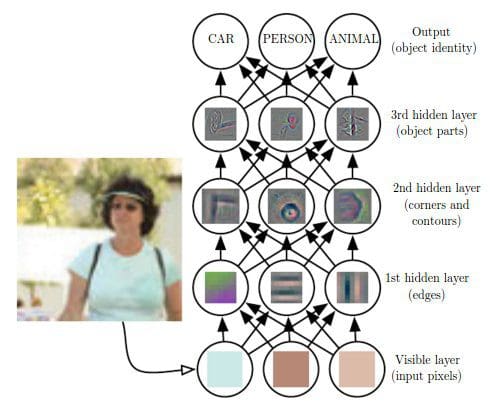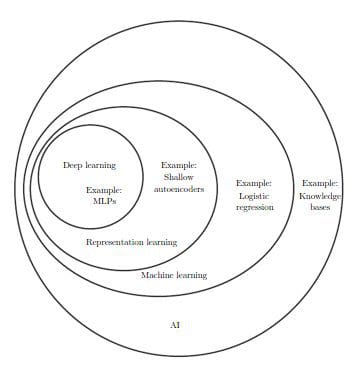New Deep Learning Book Finished, Finalized Online Version Available
What will likely become known as the seminal book on deep learning is finally finished, with the online version finalized and freely-accessible to all those interested in mastering deep neural networks.
In a recent Facebook post, book co-author Ian Goodfellow has announced that, after 2.5 years of work, the MIT Press book Deep Learning has been completed. Authored by deep learning heavyweights Goodfellow, Yoshua Bengio, and Aaron Courville, the book is poised to become the deep learning book on the market, once it is commercially released in print and digital forms. While Goodfellow understandably says that the print version will still take time, what one assumes is the final draft of the book is what is currently available on the book's pre-print website.
A description of the book from its website:
The Deep Learning textbook is a resource intended to help students and practitioners enter the field of machine learning in general and deep learning in particular. The online version of the book is now complete and will remain available online for free. The print version will be available for sale soon.

Image taken from Deep Learning book.
The book's table of contents is as follows:
- 1 Introduction
Part I: Applied Math and Machine Learning Basics
- 2 Linear Algebra
- 3 Probability and Information Theory
- 4 Numerical Computation
- 5 Machine Learning Basics
Part II: Modern Practical Deep Networks
- 6 Deep Feedforward Networks
- 7 Regularization
- 8 Optimization for Training Deep Models
- 9 Convolutional Networks
- 10 Sequence Modeling: Recurrent and Recursive Nets
- 11 Practical Methodology
- 12 Applications
Part III: Deep Learning Research
- 13 Linear Factor Models
- 14 Autoencoders
- 15 Representation Learning
- 16 Structured Probabilistic Models for Deep Learning
- 17 Monte Carlo Methods
- 18 Confronting the Partition Function
- 19 Approximate Inference
- 20 Deep Generative Models
One concern often held by folks is whether or not a book on such a technical topic is accessible to someone of their level of understanding, whatever their level happens to be. An excerpt from the introduction should set this straight, as well as put almost everyone interested in reading the book at ease:
One of these target audiences is university students(undergraduate or graduate) learning about machine learning, including those who are beginning a career in deep learning and artificial intelligence research. The other target audience is software engineers who do not have a machine learning or statistics background, but want to rapidly acquire one and begin using deep learning in their product or platform.
Basically, if you are interested in reading this book and haven't been turned off by the content of this post, the book is likely for you. The book starts off covering the required background for understanding later material, along with historical context and elementary explanations of the technical concepts. In fact, the entire first part of the book is dedicated to building the technical foundation required to study deep learning.

Image taken from Deep Learning book.
Don't be mislead, however. This is not a popular book made for the mass consumption by those with a passing interest in deep neural networks. The book covers a technical topic, and covers it accordingly. The authors are good enough, however, to not drop us into the thick of things without first providing the proper weapons needed to win the war against convolution, generative models, and hidden layers.
On a related note, if you are interested in reading the book and are looking for some study notes to go along with it, or want a technical overview of the book's contents, have a look at these unofficial deep learning notes for beginners, which are based on the book being discussed. Keep in mind, however, that the notes are not endorsed by the authors.
So, whether you have had a look at the book in the past and wondered when it would be finished, or you are just being introduced to the book for the first time via this post, go have a look at MIT Press' Deep Learning, read the finalized online version, and anticipate the printed copy coming in the (hopefully) near future.
Related:
